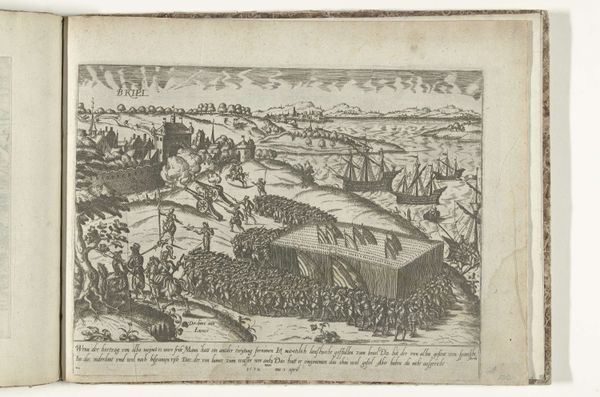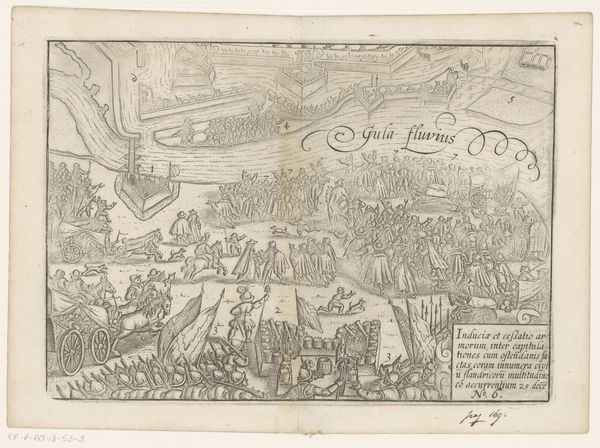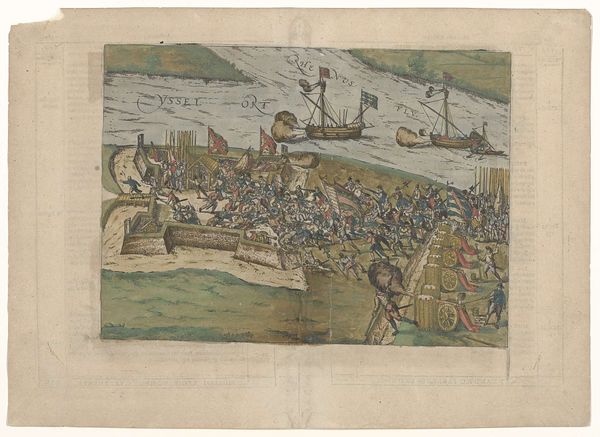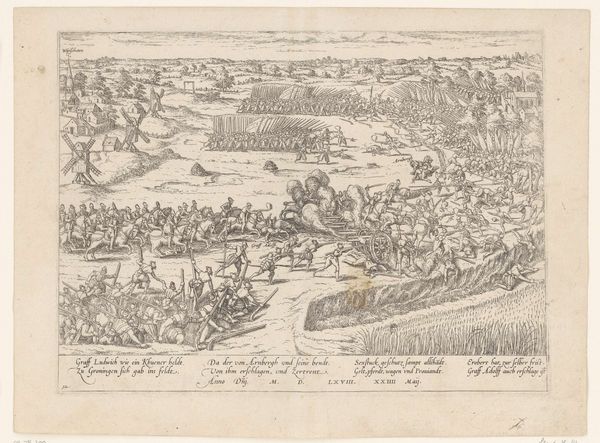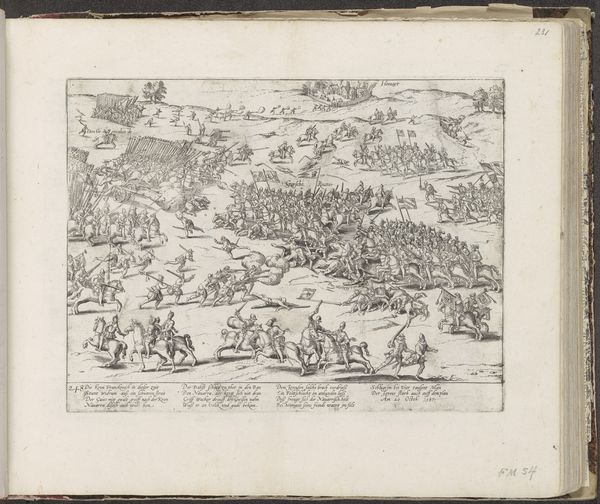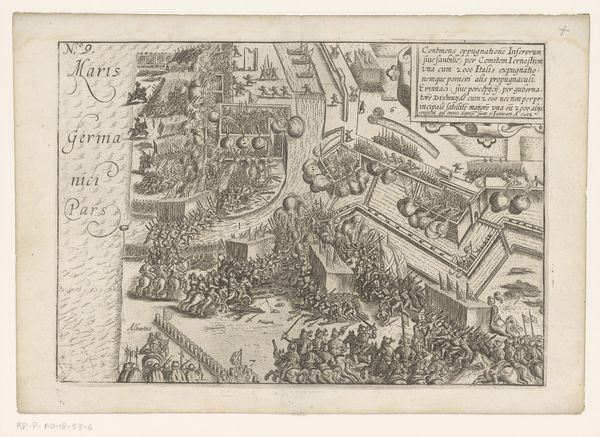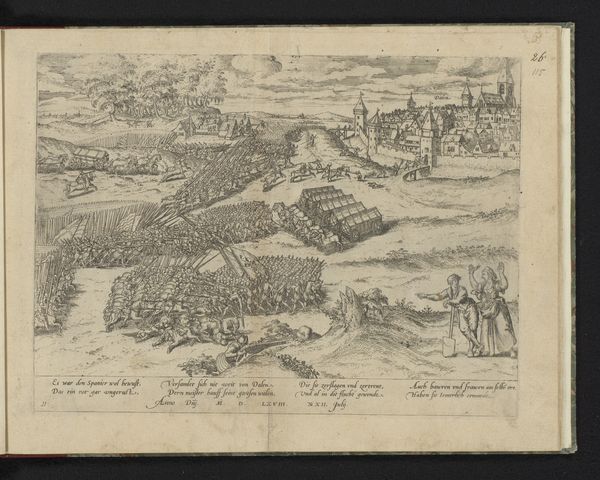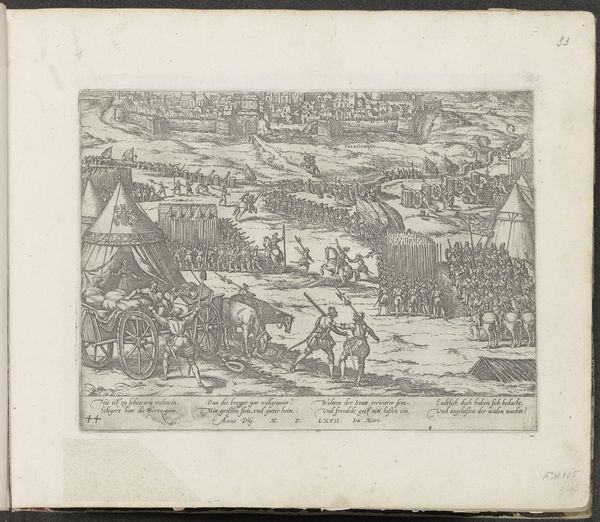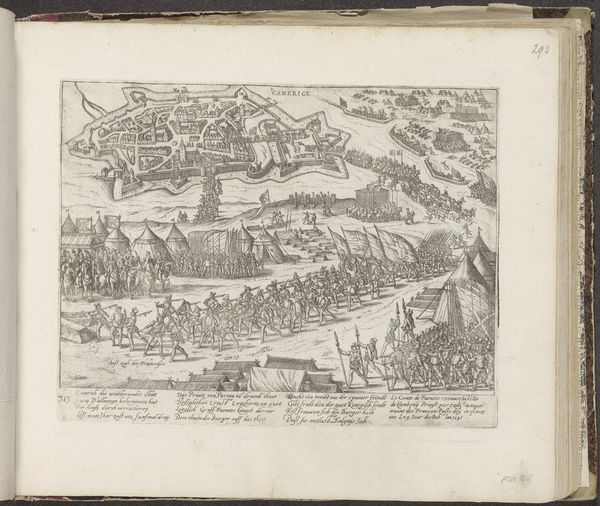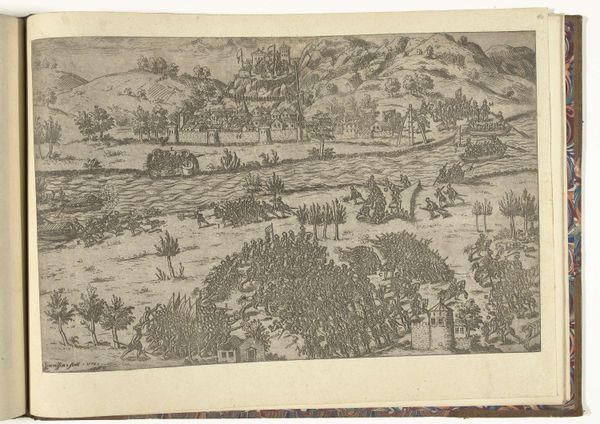
print, engraving
#
dutch-golden-age
# print
#
war
#
landscape
#
mannerism
#
history-painting
#
engraving
Dimensions: height 210 mm, width 280 mm
Copyright: Rijks Museum: Open Domain
Curator: This engraving before us, "Gevecht bij de sluis van Vreeswijk, 1585," was crafted by Frans Hogenberg sometime between 1585 and 1587. It offers us a glimpse into a tumultuous period in Dutch history. Editor: It's incredibly busy, isn’t it? My eye is immediately drawn to the explosion near the tower – a central, devastating symbol amidst all this human conflict. The limited colour palette enhances that sense of contained chaos. Curator: Indeed, the medium itself – an engraving – is crucial to understanding its creation and reception. These prints were designed for mass consumption, allowing news and propaganda to circulate widely. Consider the labor involved in creating these matrices, the printing process itself. Editor: You're right. The detail is quite remarkable for a medium intended for wide distribution. What strikes me is the depiction of warfare, reduced, somewhat schematically, to the repetition of tiny figures and weapons, becoming almost emblematic of conflict itself. The spears, in particular, look like bundles of wheat stalks. Curator: And the economic dimensions are evident. The materials—paper, ink, the press itself—speak to the burgeoning print industry and its role in shaping public opinion during the Dutch Revolt. Furthermore, prints like these fostered a sense of national identity through shared visual narratives. It’s fascinating to trace their journey from the artist’s hand to the consumer's possession. Editor: Precisely! Note, too, how Hogenberg strategically places inscriptions below the image to explain its contents, directing interpretation. The very inclusion of text amplifies the symbolism, acting almost like captions clarifying the intended historical message. Curator: Ultimately, Hogenberg’s work illustrates how artistic production during the Dutch Golden Age was deeply interwoven with political, social, and economic forces. This wasn't just art; it was a manufactured instrument of nation-building. Editor: It leaves you wondering about the artist's own investment in the imagery, and how those initial feelings become fossilized as part of the Netherlands' ongoing national story. Thanks for the details.
Comments
No comments
Be the first to comment and join the conversation on the ultimate creative platform.

